Christmas, celebrated on December 25th, is a holiday filled with joy, warmth, and a sense of wonder. From its origins as a religious festival to its transformation into a global celebration, Christmas has a rich history and an array of traditions that bring people together. In this comprehensive article, we’ll explore the fascinating story of Christmas, including its historical roots, worldwide customs, symbolic elements, and modern-day festivities. Let’s embark on a journey through the magic and merriment of Christmas!
1. The Origins of Christmas
Historical Background

Christmas, a holiday celebrated by billions around the world, marks the birth of Jesus Christ, who is a central figure in Christianity. While the Bible does not specify the exact date of Jesus’ birth, December 25th was chosen as the date to celebrate Christmas. This choice was influenced by pre-existing pagan festivals, such as the Roman Saturnalia and the winter solstice celebrations. These festivals were significant events in the ancient world, celebrating the rebirth of the sun and involving traditions of feasting, gift-giving, and merrymaking. The decision to align Christmas with these celebrations allowed early Christians to integrate their religious observance with the existing cultural context.
The Influence of Pagan Festivals
The Roman festival of Saturnalia, held in honor of the god Saturn, was one of the most significant pagan influences on the Christmas holiday. Saturnalia was celebrated from December 17th to December 23rd and was characterized by a temporary reversal of social roles, where slaves were treated as equals, and norms of behavior were relaxed. People would indulge in lavish feasts, exchange gifts, and engage in merrymaking. The spirit of generosity and the emphasis on community during Saturnalia influenced many of the traditions we associate with Christmas today, such as the practice of gift-giving and festive celebrations.
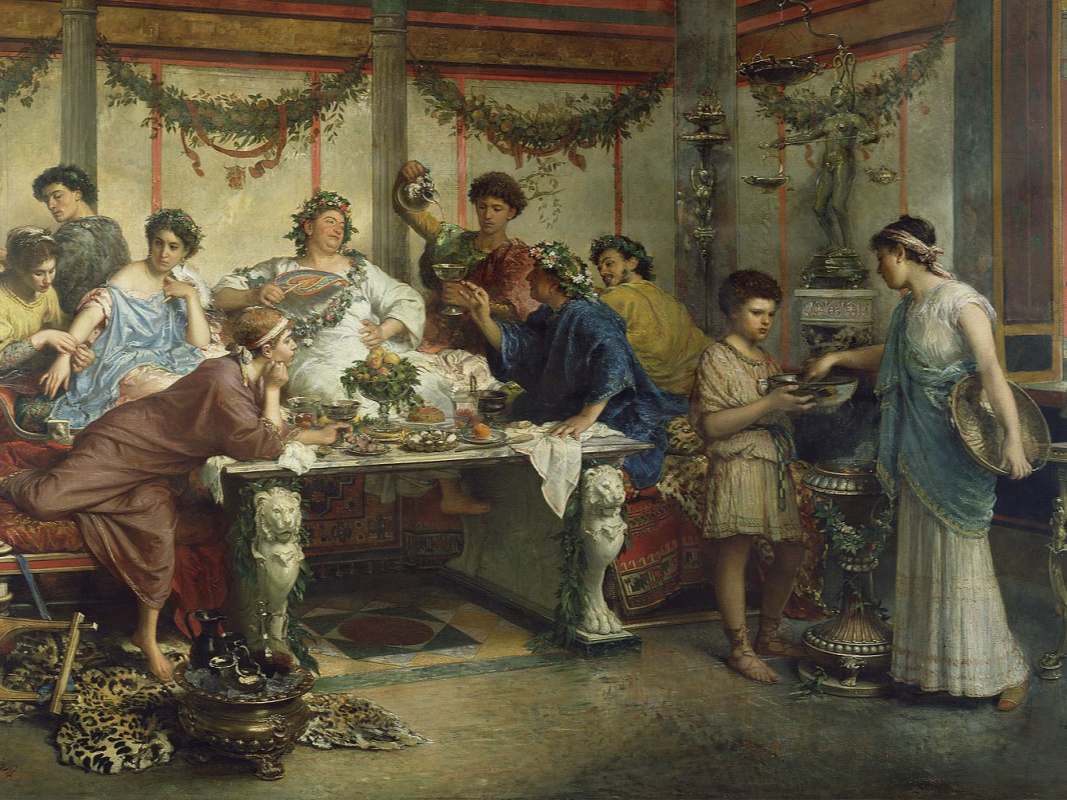
Another important influence was the celebration of the winter solstice, which marked the shortest day and longest night of the year. For many ancient cultures, the winter solstice was a time of renewal and hope, as it signified the return of longer days and the eventual arrival of spring. Festivals held during this time, such as the Norse Yule and the Roman Sol Invictus, emphasized themes of light and rebirth. The use of evergreen trees, which remained green throughout the winter, as symbols of life and resilience during the harsh winter months can be traced back to these solstice celebrations. Over time, these symbols were incorporated into Christmas traditions, with the Christmas tree becoming a central decoration in homes.
Christianization of Pagan Traditions
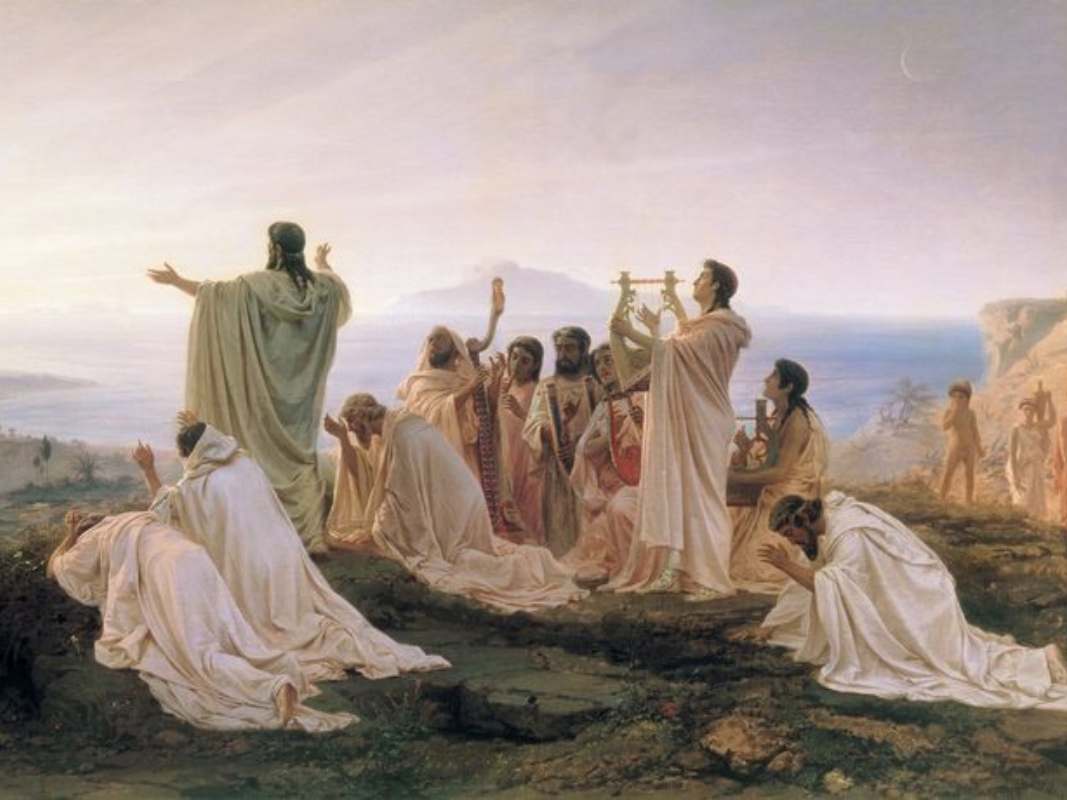
The decision to celebrate Christmas on December 25th was not made until the 4th century when the Roman Empire officially recognized Christianity. By choosing a date that coincided with existing pagan festivals, early Christian leaders aimed to make the new faith more palatable to converts by blending familiar traditions with Christian beliefs. This process, known as syncretism, allowed for a smoother transition from paganism to Christianity. For instance, the imagery of light triumphing over darkness, prevalent in winter solstice celebrations, was easily adapted to symbolize the coming of Christ, who is often referred to as the “Light of the World.”
The incorporation of these pagan elements into Christmas celebrations also reflects the broader cultural and religious landscape of the time. The Roman Empire was a melting pot of different cultures and religions, and the early Christian Church had to navigate this complex environment. By absorbing elements of popular pagan traditions, the Church was able to appeal to a wider audience and facilitate the spread of Christianity across the empire.
Early Celebrations
Christmas celebrations began in Rome during the 4th century, initially as a minor feast. However, as Christianity spread across Europe, the holiday gained prominence and began to integrate various local customs and traditions. The blending of these different cultural practices contributed to the rich tapestry of Christmas traditions that we recognize today.
The Evolution of Christmas in the Middle Ages

By the Middle Ages, Christmas had evolved from a simple religious observance into a major festival that encompassed both religious and secular elements. The holiday became a time for communal gatherings, feasting, and entertainment. One of the most notable practices that emerged during this period was the tradition of caroling. Caroling began as a way for people to express their joy during the Christmas season by singing songs of praise and celebration. Over time, it became a popular activity where groups of singers would travel from house to house, spreading festive cheer through music.
Feasting was another important aspect of medieval Christmas celebrations. The Christmas feast often featured an abundance of food, reflecting the medieval belief in the importance of hospitality and generosity during the holiday season. The feast would typically include a variety of meats, such as roasted boar or goose, along with pies, puddings, and other rich dishes. This tradition of feasting during Christmas has endured through the centuries and remains a central part of modern celebrations.
Gift-giving, which has its roots in the Roman Saturnalia, also became an integral part of Christmas during the Middle Ages. However, the nature of gifts and the manner in which they were exchanged varied across different regions. In some areas, gifts were exchanged on St. Nicholas’ Day (December 6th), in honor of the saint known for his generosity. In other regions, gifts were given on Christmas Eve or Christmas Day, symbolizing the gifts brought by the Wise Men to the infant Jesus.
The Role of the Church in Shaping Christmas Traditions

Throughout the Middle Ages, the Christian Church played a central role in shaping the way Christmas was celebrated. The Church sought to emphasize the religious significance of the holiday, while also allowing for the inclusion of popular customs. This balancing act led to the development of Christmas as a hybrid festival that combined Christian teachings with folk traditions.
One of the Church’s contributions to the Christmas tradition was the establishment of the Nativity scene as a central feature of the holiday. The Nativity scene, which depicts the birth of Jesus in a stable in Bethlehem, was popularized by St. Francis of Assisi in the 13th century. St. Francis is credited with creating the first live Nativity scene, complete with actors and animals, to bring the story of Jesus’ birth to life for the people of his time. This practice quickly spread across Europe and became a beloved part of Christmas celebrations, with Nativity scenes being set up in churches, homes, and public squares.
Another significant development during this period was the inclusion of the Advent season in the liturgical calendar. Advent, which begins four weeks before Christmas, is a time of preparation and reflection leading up to the celebration of Jesus’ birth. The Church encouraged the faithful to observe Advent through prayer, fasting, and penance, while also allowing for festive customs that marked the anticipation of Christmas. The Advent wreath, with its four candles representing the four weeks of Advent, is one such tradition that continues to be observed in Christian households today.
2. Christmas Traditions Around the World
As European explorers and colonists spread across the globe, they brought their Christmas traditions with them, leading to the global spread of the holiday. However, the way Christmas was celebrated varied greatly depending on the cultural context of each region.
European Customs

Europe boasts a rich tapestry of Christmas traditions. In Germany, the Advent calendar is a beloved custom, marking the countdown to Christmas with daily surprises. The German Christmas markets, or Christkindlmarkts, are renowned for their festive atmosphere, featuring handcrafted goods, delicious foods, and traditional holiday cheer.
In the United Kingdom, Christmas crackers are a staple of the holiday meal. These colorful tubes, filled with small gifts and jokes, add a touch of fun to the celebration. British Christmas traditions also include the singing of carols and the enjoyment of Christmas pudding, a rich dessert with a history dating back to medieval times.
Italian Christmas celebrations feature elaborate meals and traditions such as La Vigilia, a seafood feast on Christmas Eve, followed by Midnight Mass. The Feast of the Seven Fishes is a traditional Italian-American meal highlighting a variety of fish dishes.
Christmas in the Americas

In the Americas, Christmas celebrations were influenced by the diverse cultural backgrounds of the settlers. In colonial New England, for instance, the Puritans opposed the celebration of Christmas, viewing it as a pagan and unbiblical practice. As a result, Christmas was often downplayed or outright banned in certain areas. However, in other parts of the American colonies, such as Virginia and Pennsylvania, Christmas was celebrated with feasting, dancing, and merrymaking, reflecting the traditions brought by English and German settlers.
By the 19th century, Christmas began to take on a more uniform character across the United States, largely due to the influence of popular literature and media. The publication of Clement Clarke Moore’s poem “A Visit from St. Nicholas” (commonly known as “The Night Before Christmas”) in 1823 played a significant role in shaping the modern image of Santa Claus and popularizing the practice of hanging stockings for gifts. Additionally, Charles Dickens’ novella A Christmas Carol, published in 1843, reinforced the idea of Christmas as a time for family, generosity, and goodwill. These cultural works helped to establish Christmas as a major holiday in the United States and contributed to the development of new traditions, such as the Christmas tree, which had been popularized by German immigrants.
Christmas in Australia and New Zealand
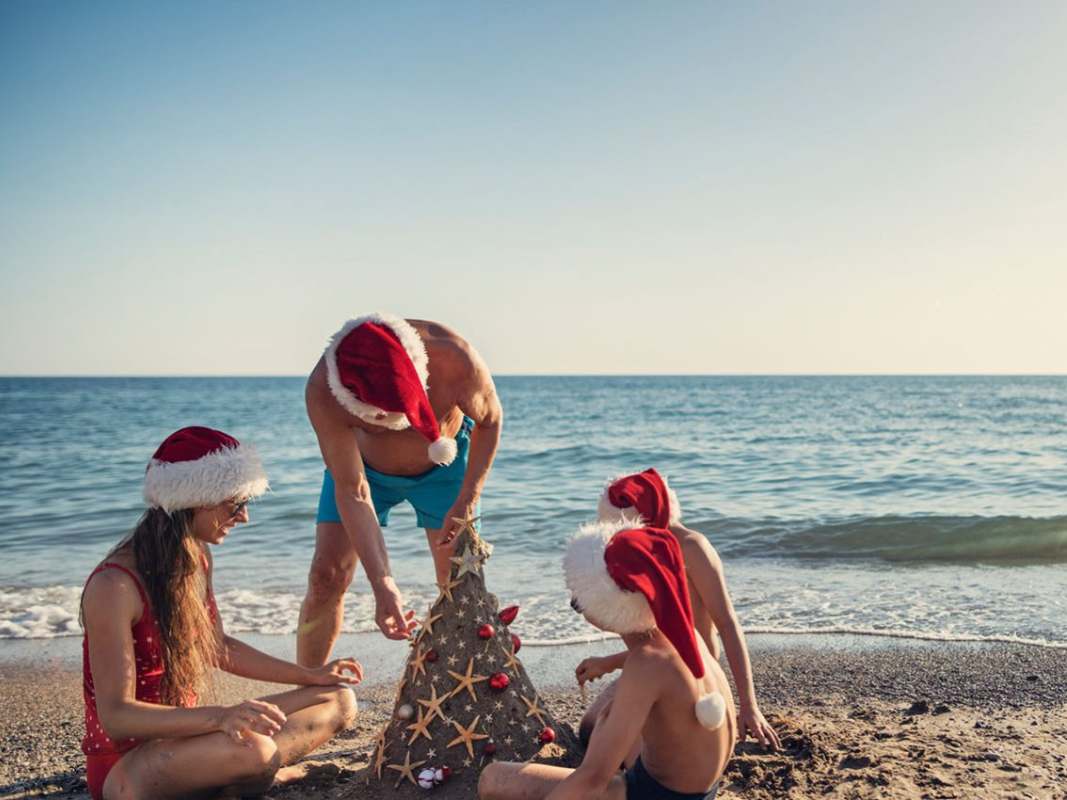
In the Southern Hemisphere, Christmas falls during the summer season. In Australia and New Zealand, traditional Christmas activities include beach outings, barbecues, and outdoor festivities. Despite the warm weather, many people still embrace classic Christmas elements like roast dinners and festive decorations. Santa Claus is often depicted in summer attire, adding a unique twist to the holiday imagery.
Unique Traditions Around the World
Christmas is celebrated in diverse ways across the globe, each culture adding its unique customs and traditions. In Japan, Christmas is not a public holiday, but it is celebrated with a focus on romance and family. A popular tradition is to enjoy a festive meal of fried chicken, a practice popularized by a successful KFC marketing campaign in the 1970s.
In the Philippines, Christmas celebrations start as early as September and continue until January. The Simbang Gabi, a series of nine dawn masses, is a significant religious tradition, culminating in the Midnight Mass on Christmas Eve. The Philippines is also known for its elaborate Christmas lanterns, called parols, which symbolize the Star of Bethlehem.
3. The Symbols of Christmas
The Christmas Tree
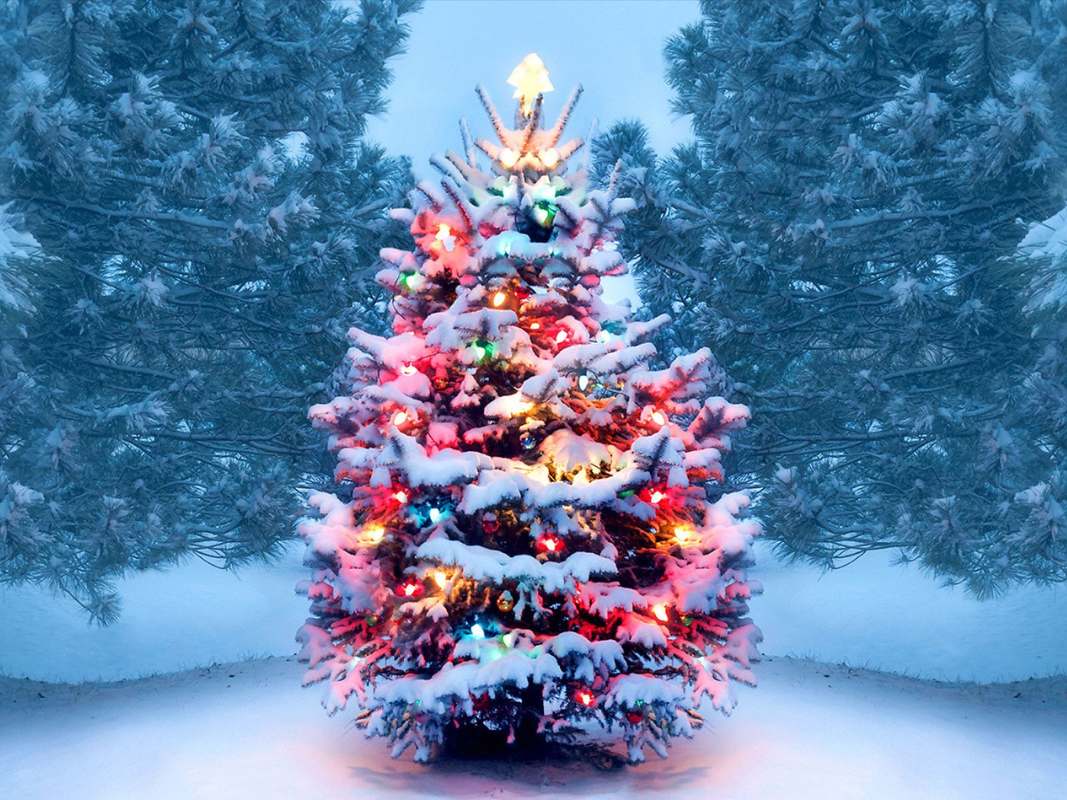
The Christmas tree is a symbol of eternal life, originating in 16th-century Germany. Its evolution from simple evergreen decorations to elaborate trees adorned with lights and ornaments reflects the changing times. The practice of placing a star or angel on top of the tree represents the Star of Bethlehem or the angel Gabriel, both significant figures in the Nativity story.
Santa Claus
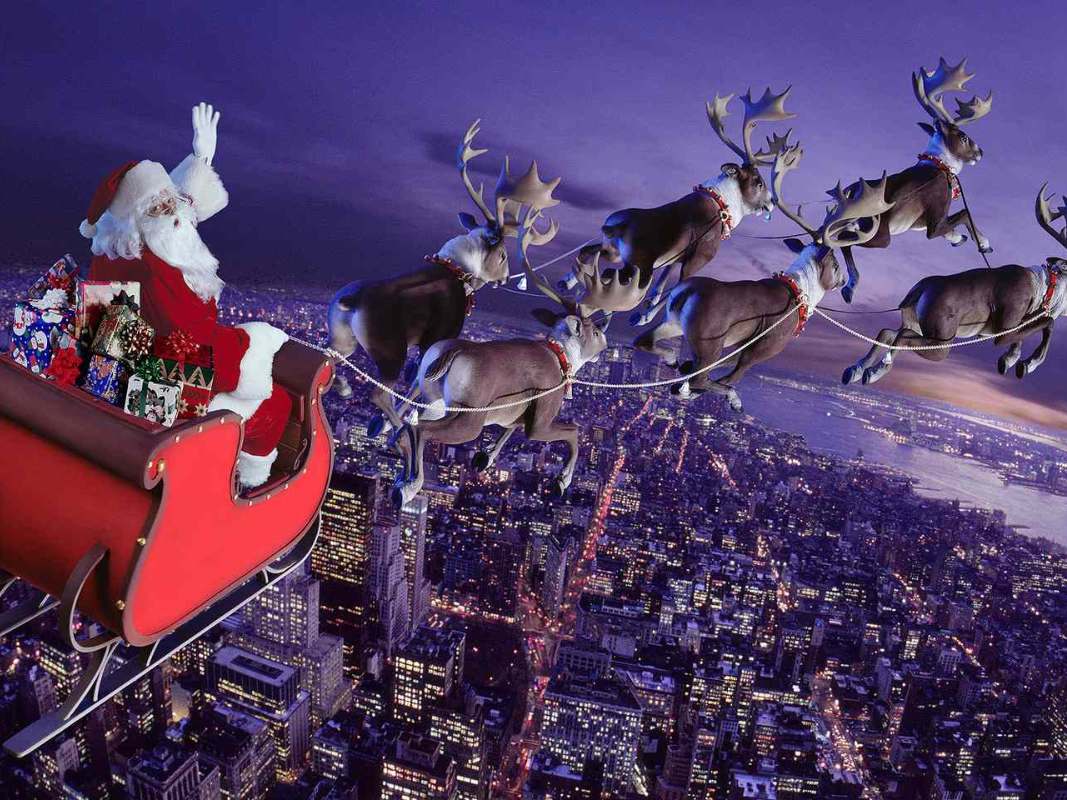
Santa Claus, or Saint Nicholas, is a central figure in Christmas folklore. His modern image, characterized by a red suit and white beard, was popularized in the 19th century. Santa’s legend includes his residence at the North Pole, his sleigh pulled by reindeer, and his annual gift-giving journey on Christmas Eve.
Christmas Lights
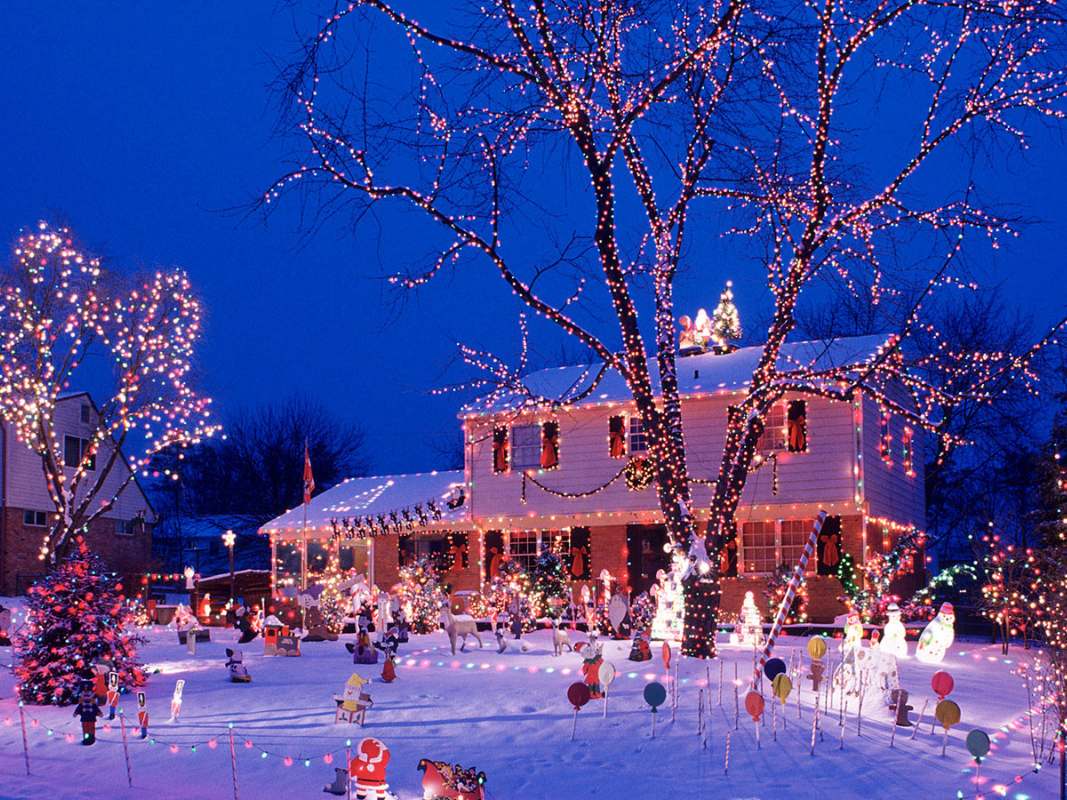
Christmas lights, initially candles, have become a modern tradition with the advent of electric lighting. These lights symbolize the light of Christ and enhance the festive atmosphere. Elaborate light displays, including wreaths and garlands, contribute to the holiday’s visual splendor.
4. Christmas Music and Carols

Traditional Carols
Traditional Christmas carols like “Silent Night” and “Joy to the World” convey the holiday’s religious significance. These songs, performed in churches and homes, reflect themes of peace and joy. Carol singing, a tradition dating back to the Middle Ages, remains a cherished practice during the season.
Modern Christmas Music
Modern Christmas music encompasses a wide range of genres, from pop to jazz. Songs like Mariah Carey’s “All I Want for Christmas Is You” and Bing Crosby’s “White Christmas” have become holiday classics. The commercialization of Christmas has led to the creation of numerous holiday-themed albums and playlists.
5. Festive Foods and Treats
Christmas Dinner
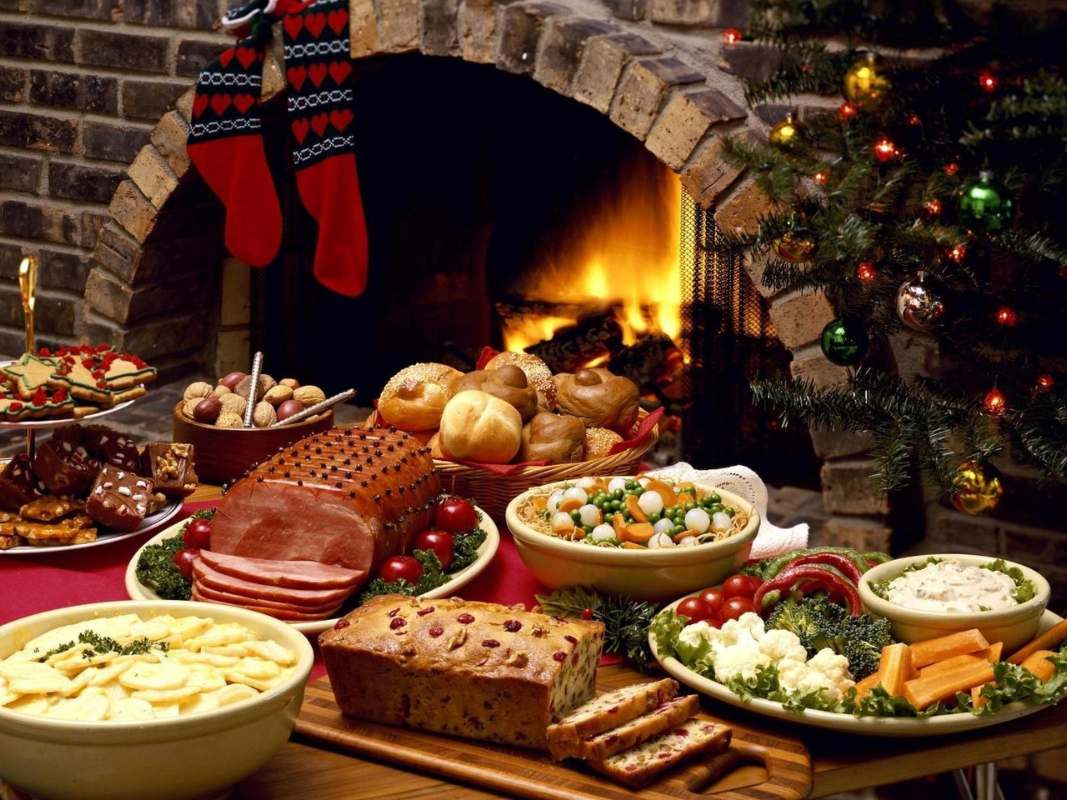
Christmas dinner is a highlight of the holiday season, with traditional foods varying by region. In the US and UK, roast turkey or ham is often served, accompanied by side dishes like stuffing and mashed potatoes. Italian Christmas dinners include multiple courses, such as pasta and seafood, while French celebrations feature dishes like foie gras and bûche de Noël.
Holiday Desserts

Christmas desserts include gingerbread cookies, yule logs, and mince pies. Gingerbread cookies, often decorated with icing, are a popular treat. Yule logs, or bûche de Noël, are a traditional French dessert made from sponge cake and chocolate. In Germany, stollen is a fruitcake dusted with powdered sugar, while in Spain, turrón is a nougat made from almonds and honey.
6. Unique Christmas Activities
Christmas Markets
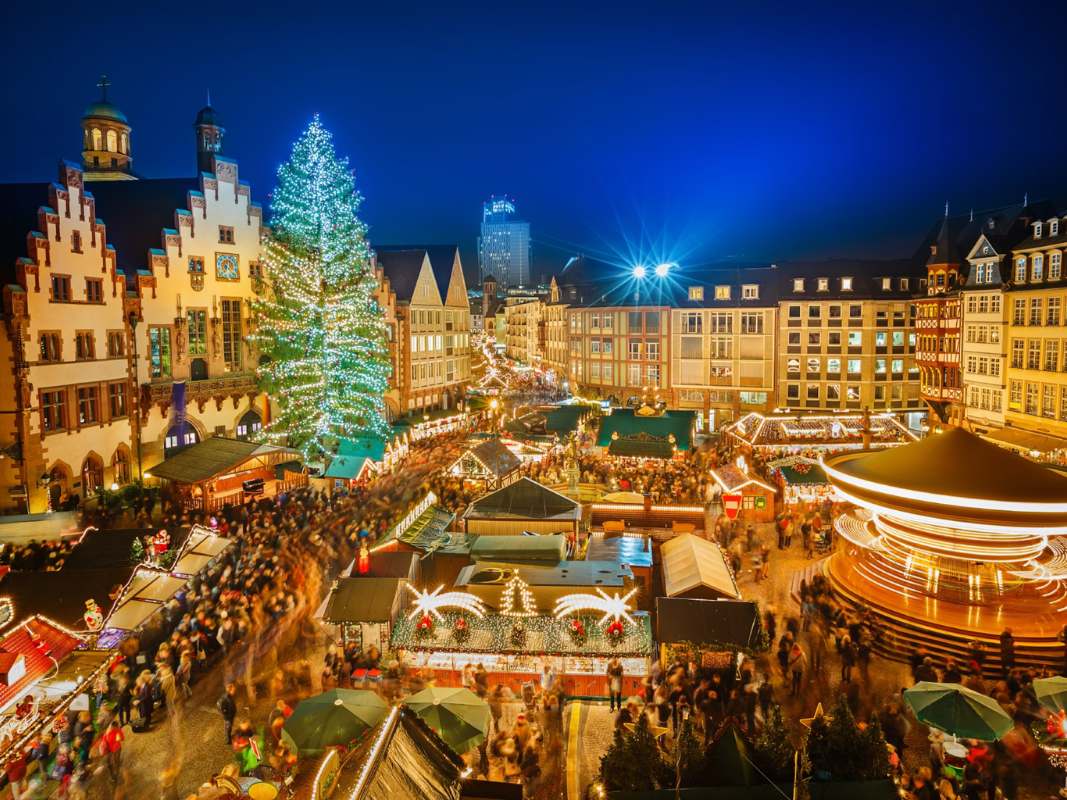
Christmas markets are festive events that feature holiday-themed stalls selling crafts, food, and drinks. These markets, popular in Europe and other regions, create a joyful atmosphere and offer a chance to enjoy handmade gifts and seasonal treats.
Ice Skating
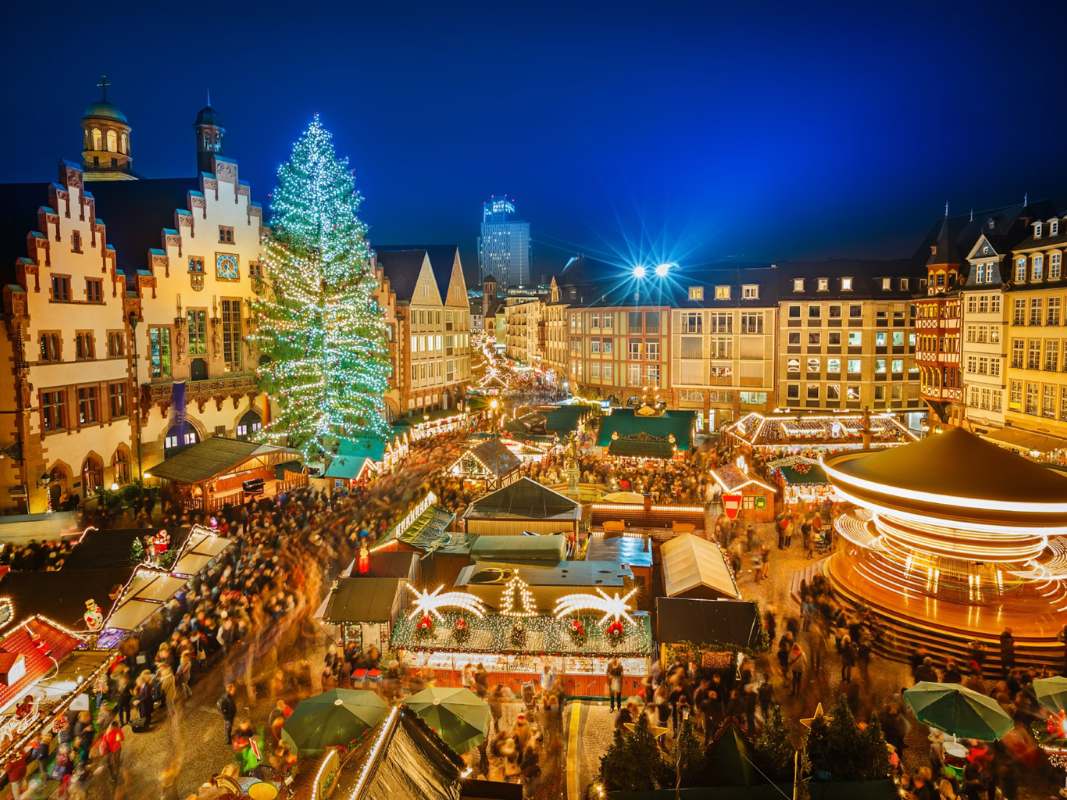
Ice skating is a popular winter activity that often accompanies Christmas celebrations. Outdoor ice skating rinks, decorated with holiday lights, provide a magical setting for skaters. The tradition of ice skating dates back to the 13th century and remains a favorite pastime during the holiday season.
Christmas Movies

Watching Christmas movies is a beloved tradition for many families. Classic films like “It’s a Wonderful Life” and “Home Alone” capture the holiday spirit and provide entertainment for all ages. The tradition of watching Christmas movies adds a cozy and nostalgic element to the season.
7. Christmas in Art and Literature
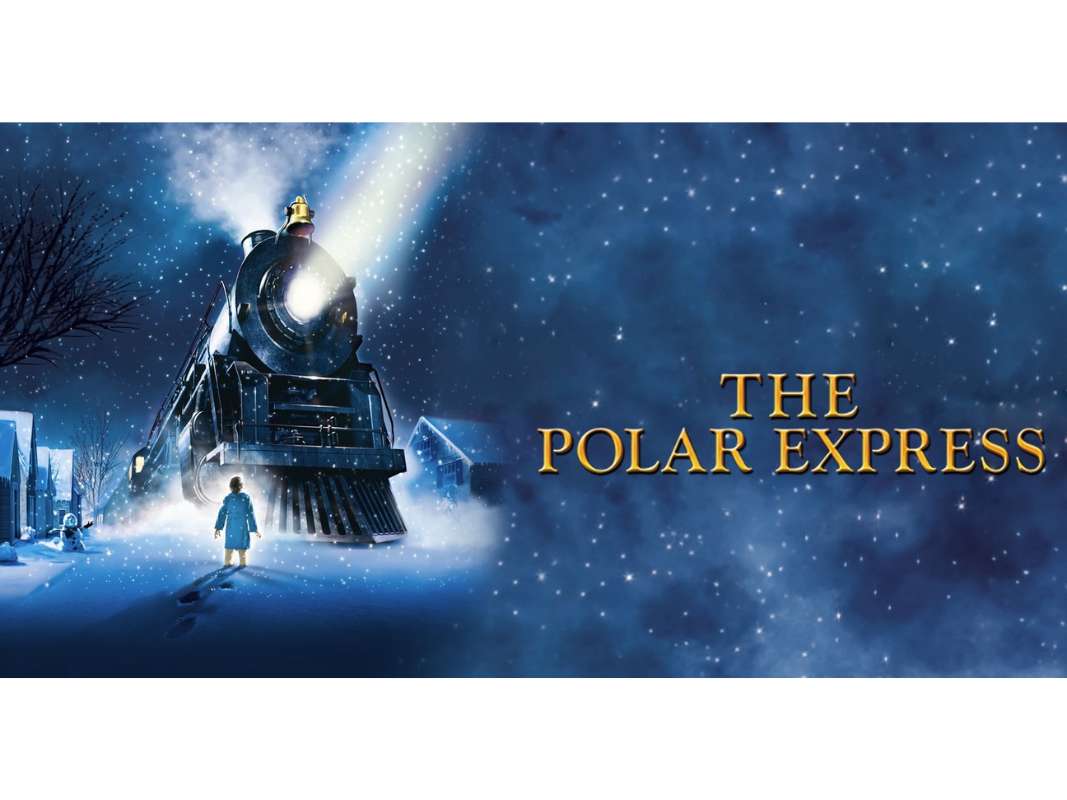
Artistic Depictions
Christmas has inspired countless works of art throughout history. Classical paintings by artists like Pieter Bruegel the Elder and Leonardo da Vinci depict various aspects of the holiday season, from nativity scenes to festive gatherings. Contemporary artists also contribute to the Christmas spirit with modern interpretations and seasonal artwork.
Christmas in Literature
In addition to Charles Dickens’ “A Christmas Carol,” Christmas has been a prominent theme in other literary works. Books such as “The Polar Express” by Chris Van Allsburg and “How the Grinch Stole Christmas!” by Dr. Seuss offer imaginative and heartwarming stories that capture the essence of Christmas.
8. Christmas Fashion and Attire
Holiday Clothing

Christmas fashion often includes festive attire such as sweaters adorned with holiday-themed patterns, sequined dresses, and cozy scarves. The tradition of wearing Christmas-themed clothing adds a playful and spirited touch to holiday celebrations.
The Ugly Sweater Tradition

The “ugly sweater” tradition has become a fun and quirky aspect of Christmas celebrations. Ugly sweater parties, where attendees wear intentionally tacky holiday sweaters, have gained popularity as a way to embrace the festive spirit and enjoy a good laugh.
9. The Psychology of Christmas
The Joy of Giving
Psychological studies suggest that the act of giving during Christmas can enhance personal happiness and well-being. The joy of giving and receiving, coupled with the festive atmosphere, creates a sense of fulfillment and connection. Acts of kindness and generosity during the holiday season contribute to positive emotions and strengthen social bonds.
Nostalgia and Tradition
Christmas often evokes feelings of nostalgia, as people recall past celebrations and traditions. This sense of nostalgia can enhance the holiday experience, making it more meaningful and enjoyable. Maintaining traditions and creating new ones helps reinforce family bonds and provides a sense of continuity and belonging.
10. Christmas Decorations
Traditional Decorations

Christmas decorations are a key aspect of the festive season, transforming homes and public spaces into winter wonderlands. Traditional decorations include wreaths, garlands, and nativity scenes. Wreaths, often made of evergreen branches, symbolize eternal life and are typically hung on doors or windows. Garlands, adorned with lights and ornaments, add a festive touch to staircases, mantels, and railings.
Modern Trends

Modern Christmas decorations have evolved to include innovative and creative elements. LED lights, holographic displays, and themed Christmas trees are popular trends. Some people opt for color-coordinated decorations, while others enjoy eclectic styles that mix vintage and contemporary pieces. Personalized ornaments and DIY decorations are also gaining popularity, allowing individuals to add a unique touch to their holiday decor..
11. Christmas Superstitions and Folklore
Christmas Superstitions
Christmas is surrounded by various superstitions and folklore, reflecting the holiday’s rich cultural heritage. In some cultures, it is believed that animals can speak at midnight on Christmas Eve, a sign of the special nature of the night. Another superstition is that finding a spider or spider web on a Christmas tree is a symbol of good luck, a belief rooted in Eastern European folklore.
Folklore Figures
In addition to Santa Claus, many cultures have their own Christmas folklore figures. In Italy, La Befana, a kindly witch, delivers gifts to children on Epiphany Eve. In Iceland, the Yule Lads are mischievous characters who visit children during the 13 days leading up to Christmas, leaving gifts or playing pranks. These figures add a layer of enchantment and tradition to the holiday season.
Christmas is a multifaceted celebration that encompasses a rich tapestry of history, traditions, and modern practices. From its origins in ancient festivals to its contemporary global celebrations, Christmas continues to bring joy, wonder, and a sense of togetherness to people around the world. Whether through festive decorations, traditional meals, or acts of kindness, the spirit of Christmas remains a beacon of warmth and generosity.
To add a special touch to your holiday greetings, consider Kiricard’s beautifully crafted pop-up cards. Each card captures the enchantment of the season, offering a unique way to share your festive wishes.
Discover the magic of Christmas with Kiricard’s exquisite range of pop-up cards:
- Merry Christmas Vintage Pop-Up Card: Features a vintage-inspired design with classic Christmas elements.
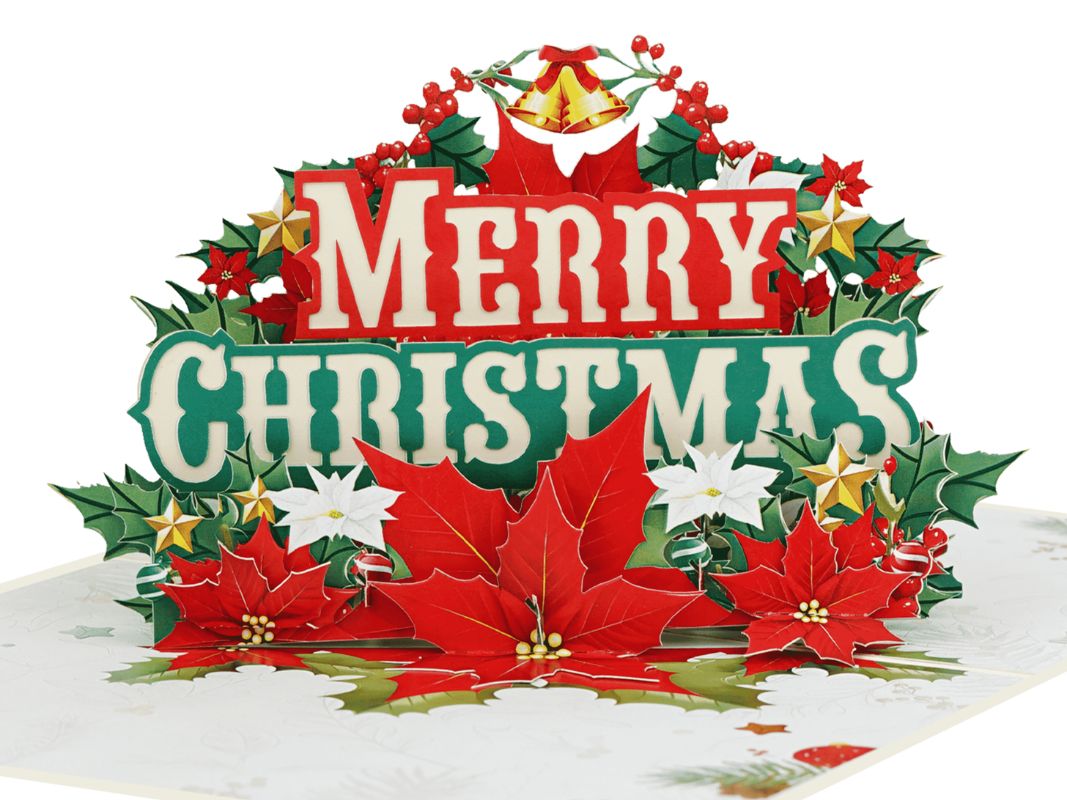
- Nativity 5 Pop-Up Card: Depicts the nativity scene, capturing the essence of the holiday.
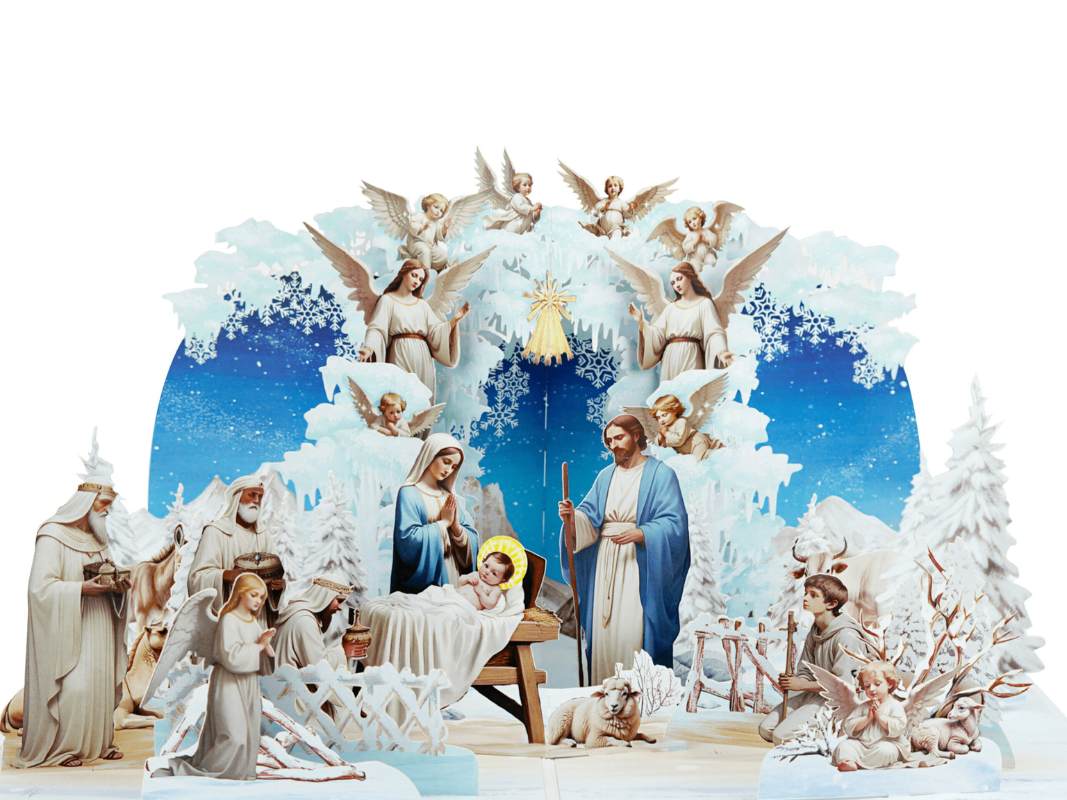
- Winter Town Santa Sleigh Pop-Up Card: Showcases Santa flying over a snowy town, spreading holiday cheer.

- Christmas House Pop-Up Card: Highlights a cozy Christmas house, adding warmth to your greetings.
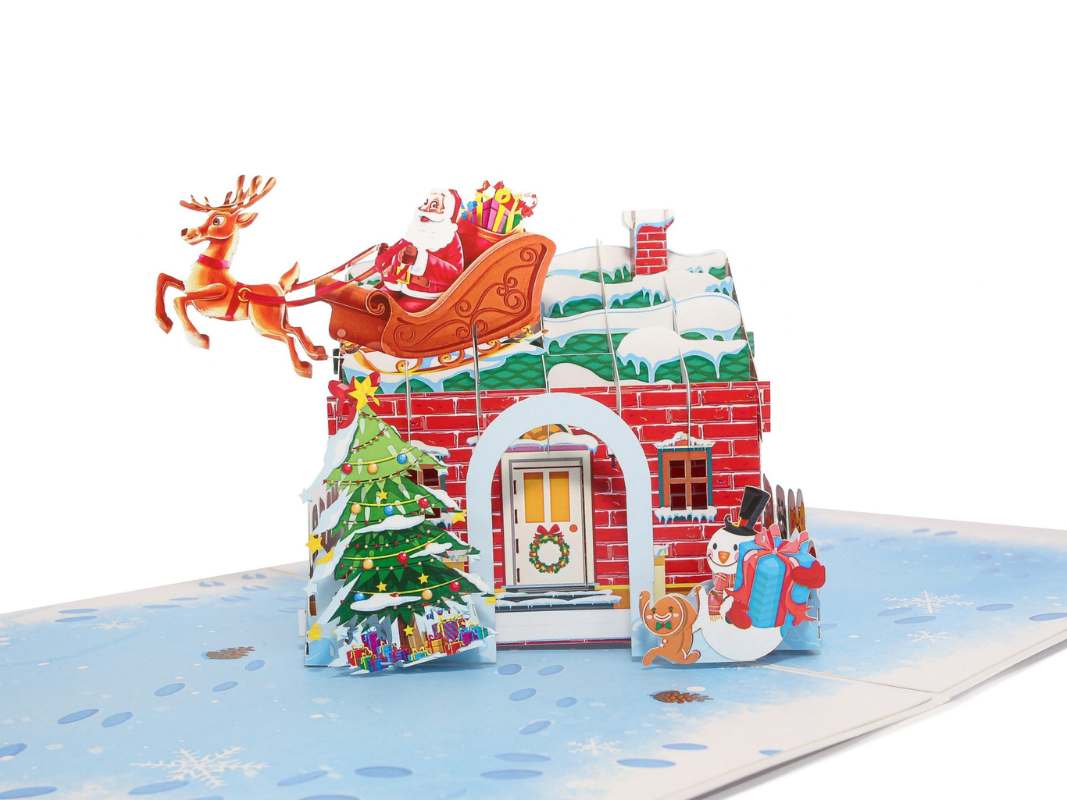
May your Christmas be filled with joy, wonder, and cherished moments with loved ones!

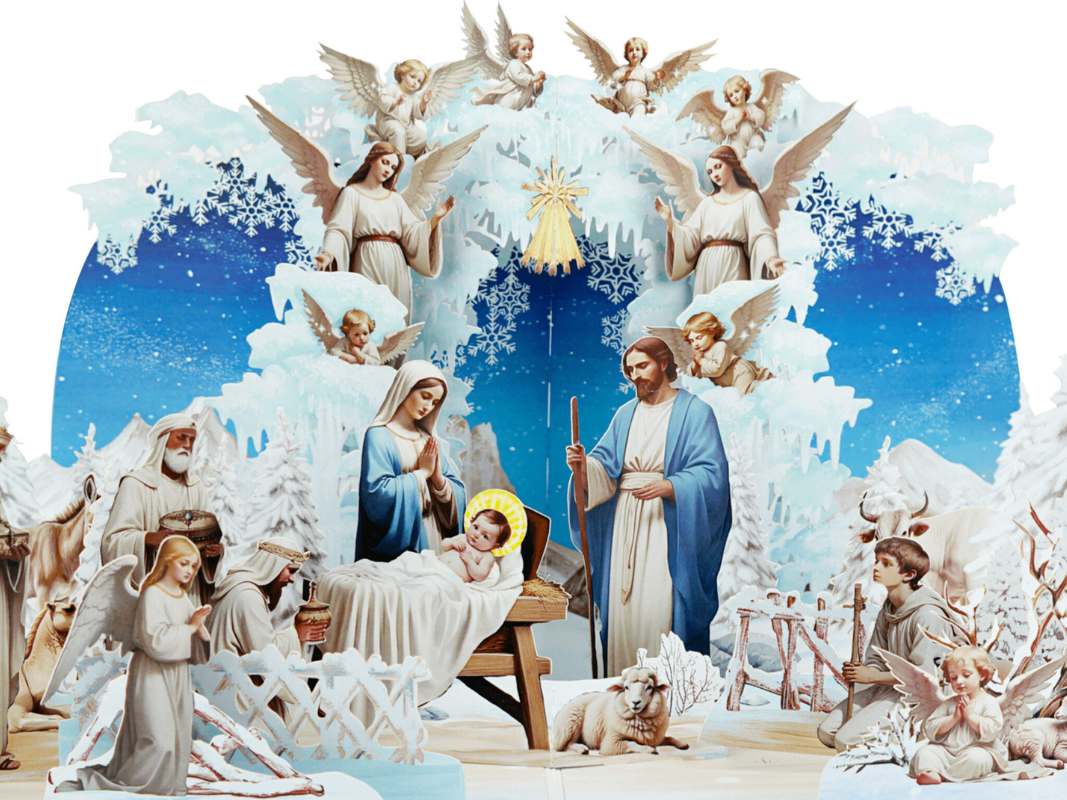




 Christmas
Christmas Father’s Day
Father’s Day Valentine’s Day
Valentine’s Day Easter
Easter Thanksgiving
Thanksgiving Halloween
Halloween
 Birthday
Birthday Wedding
Wedding Anniversary
Anniversary Graduation
Graduation Baby Shower
Baby Shower House Warming
House Warming
 For Him
For Him For Her
For Her For Kids
For Kids
 Floral
Floral Animals
Animals Trees
Trees Architecture
Architecture Vehicle
Vehicle LGBTQ+
LGBTQ+ Just Because
Just Because
 Pop-up Box
Pop-up Box Pop-up Stand
Pop-up Stand